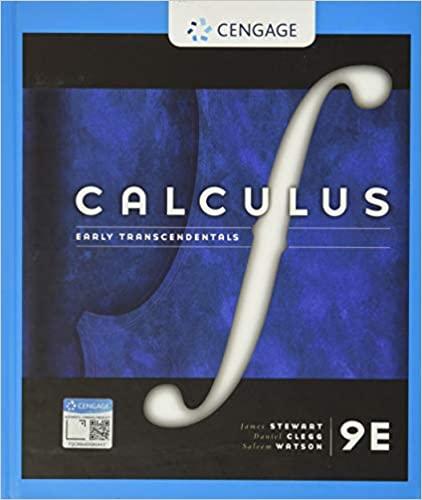Question
1. Automobile repair costs continue to rise with the average cost now at $367 per repair (U.S. News & World Report website, January 5, 2015).
1. Automobile repair costs continue to rise with the average cost now at $367 per repair (U.S. News & World Report website, January 5, 2015). Assume that the cost for an
automobile repair is normally distributed with a standard deviation of $88. Answer
the following questions about the cost of automobile repairs.
a) What is the probability that the cost will be more than $450? (2)
b) What is the probability that the cost will be less than $250? (2)
c) What is the probability that the cost will be between $250 and $450? (2)
d) If the cost for your car repair is in the lower 5% of automobile repair charges,
what is your cost? (2)
2. To investigate the percentage of Langara students who enjoy having lunch at the
College cafeteria, a group of students went to the Cafeteria during lunchtime on a
weekday. They made an announcement to give out free coffee for those who would
volunteer to comment on the food quality at the College's cafeteria. A sample of 15
people was drawn.
a) Identify the population of interest. (1)
b) Provide a description of the variable of interest. (1)
c) What kind of sample survey is it? (1)
d) Is there any issue with selection bias? Briefly justify your answer. (0+1)
3. In the following situations, i) Identify the sampling method used (1), and ii) State the
pros and cons of each sampling method (2).
a) Assume that we want to a sample of 12 of the 372 doctors practicing in a
Vancouver. The doctors' names list is available from a local medical
organization. This process begins with a random number 30 and proceeds to
get every 31st doctors' names down the list of the doctors' names.
b) Assume that we want to identify a sample of 12 of the 372 doctors practicing in
Vancouver. Use the eighth column of five-digit Random Numbers Table to
identify the 12 doctors for the sample. Ignore the first two random digits in
each five-digit grouping of the random numbers. This process begins with
random number 108 and proceeds down the column of random numbers.
c) To get an idea of how much detached houses in the city of Vancouver cost
these days, Joe went to a real estate website (like realtor.ca) to get some
information. He divided the city of Vancouver into 20 districts or
communities; randomly selected 5 of them; and all detached houses (that are
listed on the web site) within those 5 districts were chosen. (2)
d) To get an idea of how much detached houses in the city of Vancouver cost
these days, Joe went to a real estate website (like realtor.ca) to get some
information. He divided the city of Vancouver into 20 districts or
communities; randomly selected 5 detached houses from each district; and the
100 (20 districts times 5 houses per district) detached houses formed the
sample. (2)
4. A study on driving speed (miles per hour) and fuel efficiency (miles per gallon) for
midsize automobiles resulted in the following data:
Driving Speed 30 50 40 55 30 25 60 25 50 55
Fuel Efficiency 28 25 25 23 30 32 21 35 26 25
a) What are the independent/explanatory variable and dependent/response
variable? (2)
b) Use Statgraphics to construct a scatter-plot of these data. (1) Are there any
outliers? (1)
c) Using Statgraphics to calculate r. What does r tell you about the data in terms
of direction, form, and strength. (3)
d) Suppose you would like to find out if there's a linear relationship between the
explanatory and response variables in this population, state the Null
Hypothesis Ho and Alternative Hypothesis H1. (2)
e) What is the sample size n? (1) What are the Decision points in determining the
Linear Relationship? (1)
f) Could you conclude if there's a linear relationship in this population? (1)
Justify your answer. (1)
g) Based on these observations, shall we use linear regression to relate the data?
Justify. (1)
h) Use Statgraphics to find the equation of the least-squares regression line on the
fitted model. (1) Print out the graph.
i) From the StatGraphics output, what are the slope and y-intercept? (round it to
2 decimal places) (2) Interpret the slope of the least-squares line in context. (1)
j) What would be the prediction for the fuel efficiency if driving speed is 45
miles per hour? (1) Show how to calculate the residual for the teacher with
salary $52,526. (1)
k) Write the 95% prediction interval for the predicted value in i) ? (2) Interpret
Step by Step Solution
There are 3 Steps involved in it
Step: 1

Get Instant Access to Expert-Tailored Solutions
See step-by-step solutions with expert insights and AI powered tools for academic success
Step: 2

Step: 3

Ace Your Homework with AI
Get the answers you need in no time with our AI-driven, step-by-step assistance
Get Started


